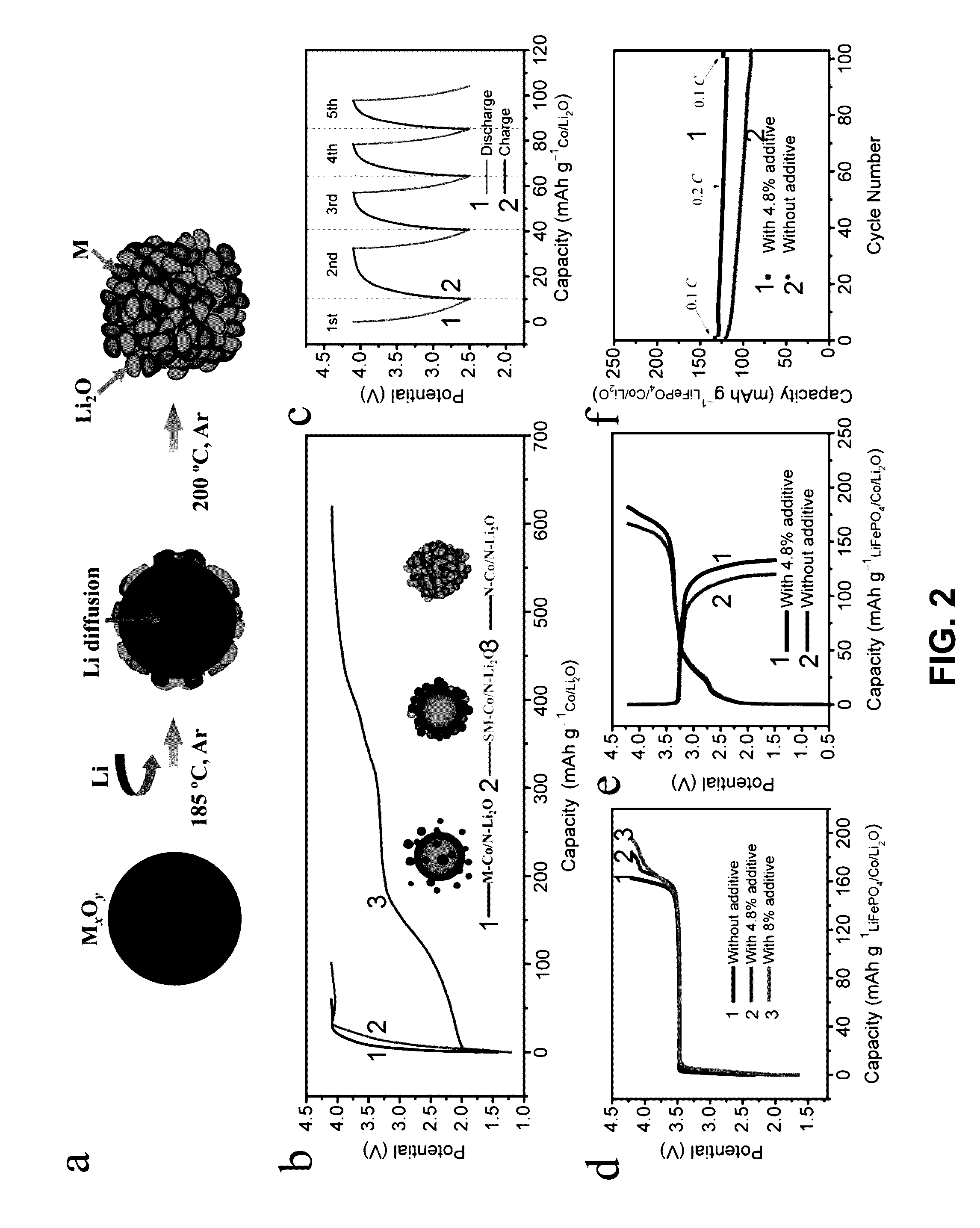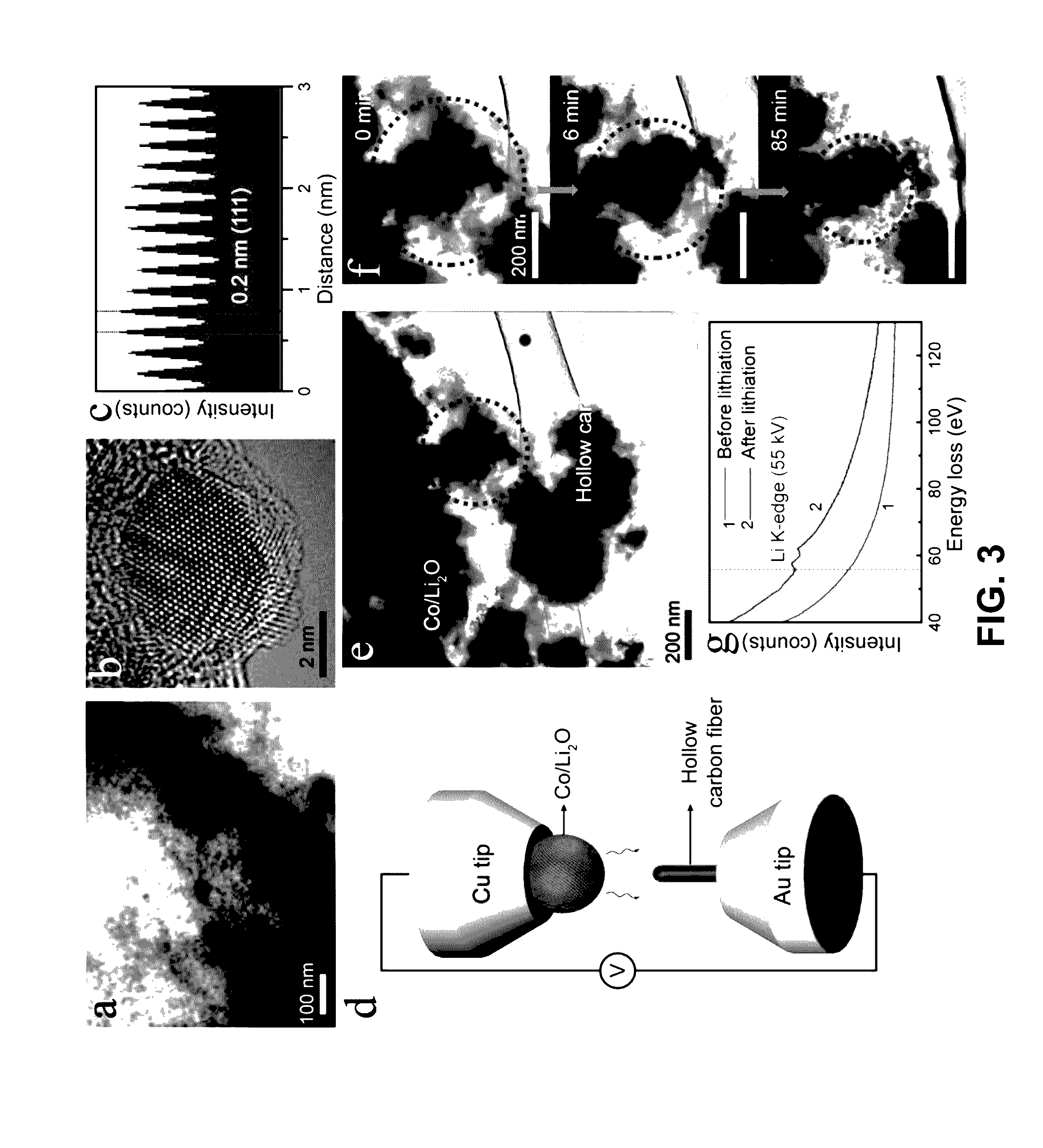Cathode additives for lithium-ion batteries
a lithium-ion battery and additive technology, applied in the field of electrode additives, can solve the problems of large initial irreversible capacity loss, low first-cycle columbic efficiency, and large amount of additional loading
- Summary
- Abstract
- Description
- Claims
- Application Information
AI Technical Summary
Benefits of technology
Problems solved by technology
Method used
Image
Examples
examples
[0086]The following examples describe specific aspects of some embodiments of this disclosure to illustrate and provide a description for those of ordinary skill in the art. The examples should not be construed as limiting this disclosure, as the examples merely provide specific methodology useful in understanding and practicing some embodiments of this disclosure.
[0087]To search for an effective cathode prelithiation additive, the following points can serve as guidelines. First, a good cathode additive should possess a much higher Li storage capacity by weight and volume than existing cathode materials (FIG. 6). For example, if doubling of the capacity of existing cathode materials was chosen as a criterion, a desirable prelithiation additive should have capacity >about 400 mAh g−1 or >about 1200 mAh cm−3. Second, the additive should be able to release its stored Li ions below the maximum potential during cathode charge but does not intake Li ion at the minimum potential of cathode...
PUM
 Login to View More
Login to View More Abstract
Description
Claims
Application Information
 Login to View More
Login to View More - R&D
- Intellectual Property
- Life Sciences
- Materials
- Tech Scout
- Unparalleled Data Quality
- Higher Quality Content
- 60% Fewer Hallucinations
Browse by: Latest US Patents, China's latest patents, Technical Efficacy Thesaurus, Application Domain, Technology Topic, Popular Technical Reports.
© 2025 PatSnap. All rights reserved.Legal|Privacy policy|Modern Slavery Act Transparency Statement|Sitemap|About US| Contact US: help@patsnap.com



